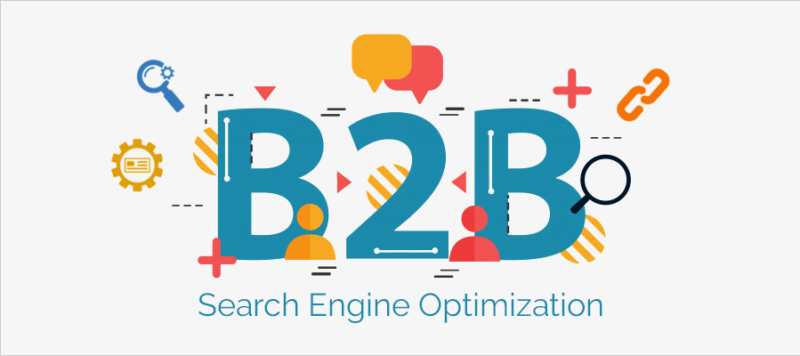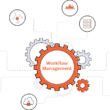In the modern digital world, online presence, or lack thereof, can break or help your business thrive. Virtually everything starts with an online query. Therefore, if your business is visible, you are already a step closer to generating and converting more leads. Being online is one thing, though, and visibility is different. Developing a website is only the beginning; you need to invest in search engine optimization (SEO). This ensures that search engines do not just index your business; its visibility is great, meaning potential customers can easily find you online.
SEO is a ranking process aimed at improving your site’s visibility in engines like Bing, Google, and Bing, to name a few. This is mainly done following on-site, off-site, content marketing, and technical SEO.
On-page optimization
The process ensures the website and individual web pages are optimized for relevant keywords. It includes optimizing aspects like the title tags, Meta descriptions, and image alt tags. The on-page optimization targets specific phrases and keywords to rank high and generate organic traffic to the site.
The primary on-page SEO objective is targeting competitive keywords and ranking the website high to the point that it appears on the first search engine results pages (SERPS). The ranking means the site is seen above other non-sponsored search results, hence the organic traffic, which is more productive compared to the ads. The better the on-page optimization, the more eyeballs the site generates, traffic that’s usually primed to be converted.
Off-page optimization
The strategy involves building links to your business’ website from other websites. The approach involves measures like guest blogging, directory listings, and social media. Basically, you are targeting traffic from other sources to attract more to your website. Link building improves a website’s SERPs and can help build relationships with other websites in your industry. The main link-building goal is to improve the PageRank, an analysis algorithm used by search engines to rank pages. The higher the rank, the more likely it’ll be for your site to appear higher in SERPS.
While it might feel like you are contributing to other websites’ success, it is a win-win situation. This is because the links can help improve business credibility. While your guest post will help the target website generate more traffic, association with a well-known and trusted site gives your business a reputation boost. Moreover, the strategy increases inbound links to your sites, improving visibility. Building healthy relationships with other websites in your industry also means you can exchange links, further improving the ranking, reputation, and traffic generated.
Content marketing
Content marketing entails creating and distributing valuable, relevant, and consistent content. The content is crafted to attract and retain a clearly defined audience. The traffic can then be driven into profitable customer action. You attract the users through relevant, compelling, and helpful content such as guides, blogs, FAQs, whitepapers, eBooks, and infographics, to name a few. As they turn to your business for helpful content, they’ll eventually be interested in your products/services, converting them into leads and eventually customers. The content can be spread in various ways, including social media, emails, websites, and third-party channels. The conversion can be in forms like making a purchase or subscribing to your service.
Technical SEO
The technical part is the SEO aspect that gets the most attention. It is a process of optimizing the site and ensures the search engines can easily find, index, and rank the content. The technical part entails aspects like optimizing the site’s architecture. This means ensuring there are no technical errors and that the site’s content is well-structured and easy to read and crawl. The process also entails improving the site’s usability, considering elements like speed, responsiveness, and mobile-friendliness.
While the search engines seem to take center stage when considering technical SEO aspects, they also impact the end users. For instance, if the speed and responsiveness are not great, the bounce rate, even with a good ranking, will keep skyrocketing. Likewise, if the content structure isn’t great, users can hardly navigate and find the content they are looking for, further impacting the site’s usefulness.
Now you have a clear view of what SEO entails, so how does it fit in the B2B arena?
B2B businesses target other businesses, delivering products or services. B2B marketing is complex, given the variety and massive product/services, not to mention the typical lengthy sales cycles. The primary customers are businesses, meaning you must appeal to the right decision makers, tip them in your business’s favor, and manage the complex and lengthy process. Attracting a professional, for example, an entrepreneur, business manager, or doctor, to mention a few players, is challenging enough. Therefore, optimizing your online presence to deliver outstanding results requires a practical strategy. B2B SEO is equally, if not more complicated than traditional B2B marketing, yet critical as you strive to capture leads and win more businesses.
What is B2B SEO?
B2B SEO is focused on helping businesses rank higher in search engine results for queries that are related to their products/services. This is following the measures, including optimizing website content, building backlinks, and doing keyword research, much like any SEO strategy.
How is B2B SEO different from B2C SEO?
The simplest difference between B2B and B2C SEO is the target audience. B2B SEO is focused on optimizing for keywords that are related to business products or services. B2C SEO is focused on keywords related to consumer products or services. Considering the target audience and their field prowess, B2B SEO typically involves optimizing for long-tail keywords and marketing to a narrower, more specific audience. Other key differences that set B2C aside from B2B measures include:
- B2B SEO targets decision makers, while B2C is tailored for a broad audience.
- B2B SEO employs technical content to appeal to the field’s professionals, while B2C can use fun, emotional, and light content.
- B2B SEO targets low-volume keywords to capture a specific audience, while B2C uses high-volume keywords for a broader reach.
- Ideal B2B keywords have high CPCs (Cost per click), while low CPCs keywords suffice for B2C SEO.
- B2B SEO doesn’t invest much in social media, while it is crucial for B2C SEO success considering the social relationships needed.
B2B SEO success strategy
A successful B2B SEO strategy typically includes a mix of on-page optimization, off-page optimization, content marketing, and technical SEO, as highlighted earlier. So let’s dive a little deeper into how you can craft a B2B SEO strategy for growth.
Buyer persona
Defining the buyer persona is the most critical B2B SEO aspect. This is since B2B SEO targets a narrow audience, emphasizing the need to ensure it is clearly defined. Before you even start thinking about the market demographics, you first need to look inside and ask:
What problem does our business solve?
This will guide your buyer persona identification and spearhead the keyword research. The answer tells you what pain points your products/services address. It allows you to have a broad view of the prospective businesses that may require your offerings, spearheading your quest to narrow their profiles further.
Let’s look at other top questions to help you define the buyer persona.
What role and titles do the prospective hold?
B2B SEO targets decision makers in other businesses, but who do you specifically target? Identifying the common roles and titles the decision-makers hold allows you to tailor content geared to their liking. You’ll also establish where such users are likely to be found, what their decision-making process mainly involves, and how you can facilitate the best engagement.
For example, a software business targeting the medical field means that the likely roles and titles are doctors and other healthcare specialists. With that in mind, you can research, learn how and where such decision-makers look for information and provide useful content such as eBooks. This enhances visibility and, with useful content, helps you win more traffic to your site, which makes your lead generation more productive. The bottom line; you know who the decision-makers are and where they are, allowing you to craft content geared for maximum engagement.
Who are your competitors?
What other businesses does your ideal customer know about? Competitor analysis is among the effective ways of defining user persona. It also gives your business an edge since you can establish gaps and leverage them as you craft a B2B strategy. For example, you can use the information to establish the SEO, social media, and content marketing measures the competitors use and tailor your approach to offer better.
While looking at competitors doesn’t sound much like profiling the buyer persona, reviewing your competitors helps you define their attributes in more ways than simply following your business model. This is more so since you’ll always have a bit of bias towards your business because every entrepreneur wants to think their offerings are unique. However, following the competitors’ analysis, you’ll uncover more details on the buyer persona and help you strategize your SEO measure to ensure you are doing what they are and much more to gain a competitive edge.
You have the basic buyer persona profile, including the industry, typical age, salary range, role, title, and education. Now that you have a broad grasp of the buyer persona, you can further refine it to ensure you target the specific prospective buyers. For instance, let’s assume you are a software business; an example of a more refined buyer persona includes details such as:
- Goals: This looks at the main pain point your prospective buyer wants to address. In this scenario, the decision maker could be the HR head, looking to streamline aspects such as payroll management as the team grows.
- Challenges: As a first-growing business, the HR department could be wasting more time on redundant activities and looking for a solution to cut the processes. The software they’d be looking for is easy to integrate with existing tech infrastructure and use and automates most of the processes.
- How we help: You may be offering payroll software tailored to improve efficiency through automation and improved transparency. This solves the immediate goal and offers an extra perk the HR team might not have thought about since transparency improves employees’ satisfaction.
- Messaging strategy: Your software addresses the goals and challenges of the main decision maker, but how do you tailor the message to ensure they are tipped to your favor? Focus your message on streamlining payroll management; that’s the key issue. Don’t dwell on the sophistication or the software development process. This is since the HR with a degree in the field doesn’t necessarily know the ins and outs of software development or are interested. They are only interested in finding software that’ll ease their payroll management.
You have a clearer picture of your prospective buyers; now, you can start optimizing the site, ensure you are visible and that the users are interested in your offerings. How do you do that? The first step is Keyword research.
B2B Keyword research
How do the decision-makers search for information? This entails understanding the user’s intent. Simply put, what does the user have in mind as they hit the search engine and make a query? The modern keyword research aspect isn’t as overwhelming since you can leverage various tools, especially analyzing your competitors to establish which rank is better. As you navigate the keyword research, a productive approach is grouping them and diving deeper per category. Start by identifying:
Top funnel keywords for blog posts
The upper funnel keywords can also be categorized as informational or navigational keywords. They are phrases the customers use in their early search stages. They haven’t decided at this life cycle stage, meaning that the search results introduce them to your business.
The informational search intent is to gather more information, such as specific answers to a certain pain point or general guide. The “how to” keywords are prevalent in this stage as users seek to learn more about an aspect. The navigational stage offers more details as users seek to discover more about a theme. The prevalent keywords in this category are on reviews, such as “best payroll software” content that provides comparisons.
Targeting the top funnel keyword helps you reel the users in during their earlier stages. The more helpful the information provided in your blog posts, the likelier they are to stick around. This tips them to check out your offerings and eventually convert into active customers.
Bottom of the funnel commercial keywords
The bottom of the funnel commercial keywords is also known as transactional keywords. They are terms used when a user is considering making a purchase. At this point, the user can search with terms like product name or discount code, among others geared to making a purchase. They are ready to invest, but some may still be looking for more refined details of your offerings. During the commercial life cycle, the user looks deeper into a brand or product, meaning keywords like “review of” could still be effective. Finally, at the transactional level, the user is ready to buy, subscribe, or take other actions, meaning the discount, deals, and other actionable keywords are ideal.
You know the keywords to target at each buyer’s journey stage. As you strive to supercharge B2B SEO, what are some of the best practices to follow in your keyword research?
The keyword difficulty
How authoritative is your brand? B2B keywords are competitive, but the difficulty varies. If you are a growing business, chasing highly competitive keywords may not be the most productive strategy. Instead, develop authority first, using the less competitive keywords. As your domain commands more authority, targeting the extremely competitive keywords will yield notable results.
The keyword intent
Categorizing the keywords as highlighted above is a great strategy. Nonetheless, don’t underestimate the need to clearly define the intent before mapping the keywords in certain stages. Remember; if the search intent isn’t satisfied, you’ll hardly capture and keep the users interested. Therefore, check out other search engine results and the type of content that ranks for such keywords, helping you to define and map them to enjoy better results.
Search volume
As you develop a B2B SEO success strategy, the search volume can be challenging. This is since most B2B keywords return a low search volume, which can be discouraging. You may think the target keywords are ineffective, but the primary reason is that they aren’t as searched as the B2C ones. The B2B searches are a lot less and use more defined search terms, further emphasizing the need to develop a clear buyer persona to identify the best keywords to target.
Your B2B SEO strategy is coming along fine, and you are ready to start generating the content. Don’t be in haste; create a Content calendar.
Why do you need a content calendar?
First, you need to be organized. This means following a defined content flow, ensuring users aren’t confused. There is the concept of teamwork, too. You want to ensure that everyone is pulling in the same direction. This includes the content voice, messaging, and tones. If the various players, including managers and content creators, aren’t on the same page on such matters, you’ll deliver conflicting content, confusing the target audience. The content calendar keeps everyone in check and ensures continuity. You’ll stay on track, even when it seems like your SEO strategy isn’t yielding results during the early stages. The calendar will set you up for success since you’ll maintain consistency across the board.
Create and optimize content
Content is king – the phrase coined by Bill Gates still and will continue to hold in the foreseeable future. Optimizing the content is no longer about stuffing the keywords. Such a measure will only drive more traffic away since they won’t realize any value from your content. Strategic keywords placement and ensuring you are following the right category as per your roadmap make it easier to consistently craft and upload optimized content.
More B2B continues to turn to freelancers for content generation. This is considering their resourcefulness and cost-effectiveness. The outsider’s perspective also helps in bringing fresh ideas and avoiding bias. Whether it is a short email, a guest post, FAQs, or eBooks, among other content types, you need to ensure it is optimized following the buyer persona to improve the engagement.
Backlinks
What’s next, now that you’ve optimized the technical part of the site, have the buyer persona and keywords, and are generating content? Building healthy relationships; how? Through backlinks which drive more organic traffic from other channels. Link building, as highlighted earlier, is an integral part of B2B SEO, especially considering the authority it helps develop. Being associated with other authoritative sites adds credibility to your business, meaning users will easily trust and work with you.
Selling directly to other businesses rather than consumers is a promising field. Nonetheless, it is a complicated industry that demands the right strategies to capture the buyers, convert them, and keep them in your books. In addition, you deal with informed users who have to go through a lengthy decision-making process before buying. As the online world becomes the standard, the need for B2B SEO can’t be emphasized enough as businesses strive to keep up with the evolving trends. With the above pointers, you are closer to developing a solid B2B SEO strategy and consistently growing your business into a bigger and more profitable venture.






